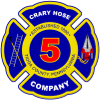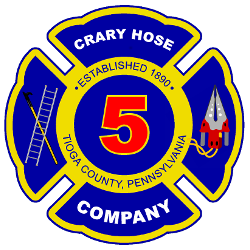We all have witnessed the troubling trend of increased gun violence in our country. We all struggle with understanding the mindset of the perpetrators and processing the feelings that these tragic events elicit. Discussions of root cause, prevention, and mitigation offer potential solutions that may exhibit both efficacy and unintended negative repercussions, but at the end of they day the threat of an active shooter situation is a reality in our present-day society. It is up to Law Enforcement, EMS and Fire personnel, among others, to be prepared to respond in the unconscionable event an active shooter situation occurs.
The North Central Task Force, in conjunction with the Tioga County Sheriff’s office, sponsored a Rescue Task Force training class at Wellsboro High School on June 22nd and 23rd, 2024. Participants included members from multiple local EMS/Fire organizations (Sabinsville Ambulance, Knoxville-Deerfield Fire/QRS, Nelson EMS, and Crary Hose Fire/QRS among others) and law enforcement (Westfield Borough Police Department and the Tioga County Sheriff’s Department.) This 16 hour course is designed to teach terminology, strategy, tactics, and skills to be used to participate in and manage an active shooter incident. 7 members from Crary Hose Company attended the event in various capacities including EMT, EMR and Law Enforcement roles. Areas of focus were active shooter statistics, coordinated response principles, rescue task force implementation, patient care in both a direct and indirect threat environment, warm zone patient care, support functions and command/control. The concept of Hot Zone (direct active threat), Warm Zone (indirect threat) and Cold Zone (minimal threat area) areas within an immediate incident location were used to dictate level of care, injury treatment priorities, triage, and movement of responders and patients between each zone.
Day 1 began began with a discussion of safety and assigning a safety officer. All participants were checked multiple times upon entry into the class for weapons, and were rechecked each day and each time they left the training area. Clearly-marked, inert weapons were used during all training exercises. The lecture continued on topics of statistics and the principles of response. Just prior to lunch, participants were shown how to carry downed personnel using one-man and two-man carrying techniques. They were also instructed on how to self-apply tourniquets in the responder becomes injured with a gunshot wound or serious bleed in the extremities. After lunch which was provided by the Tioga County Sheriff, the lecture and classwork continued with actual video/audio of some well-known active shooter situations, direct/indirect threat patient care. Emphasis was placed on providing life-saving care only. Wounds with moderate to severe bleeding receive tourniquet, packing, occlusive seal/dressing and/or direct pressure depending on location of the wound. Airway is to be protected via positioning and usage of a nasal airway adjunct if required. Respiration and breathing can be preserved via occlusive dressing if there is a sucking chest wound or thoracostomy needle if a tension pneumothorax is present. Hypothermia is always a concern, even in relatively mild weather, so covering with a cloth blanket or a silver “space blanket” can help to maintain body temperature.


Day 2 focused on hands-on implementation of the concepts learned on day one. Law enforcement officers (LEOs) practiced movement, providing protective escort for EMS personnel into the warm zone, and response to threat presentation in the warm zone. EMS personnel assisted with these exercises and learned how to move and remain vigilant when operating in a warm zone. LEO practiced skills in providing protective corridors and islands within the immediate active incident location to allow EMS and Fire personnel. Late morning, the participants were joined by volunteers to play the roles of victims, and numerous live-action scenarios were played out. Police and Tactical Paramedics were issued inert training weapons, while EMS Personnel donned protective gear and were given real radio equipment, medical supplies, and other gear. Each scenario provided unique challenges to patient care, security, and egress from the warm zone to a casualty collection point. Numerous curveballs were thrown into the mix, including darkness, loud music, and fire alarms.
Multiple members commented that this training was one of the most informative and useful training sessions that they have attended. The cross-application of the skills practiced during the live-action scenarios carries over into daily activities at normal incidents. It was an opportunity to learn and practice niche skills as well; skills that we hope to never have to use but are prepared to in the service and protection of our community. The approach to medical assessment, triage and egress is very useful in our day-to-day work at typical trauma incidents. The instructors were skilled and knowledgeable and provided many tips and tricks in the practical application of the principles introduced in the class. We hope that we get the opportunity to follow this class up with some additional training in the area of active shooting incidents.
Thank you to the instructors, the North Central Task Force, and Tioga County Sheriff Frank Levindoski for hosting and conducting the course, and thank you to all Crary Hose members that participated and all class participants for sacrificing your weekend for the security of our communities.










